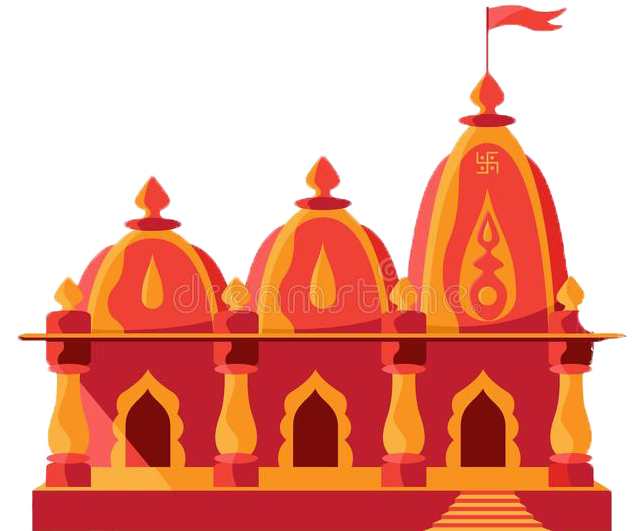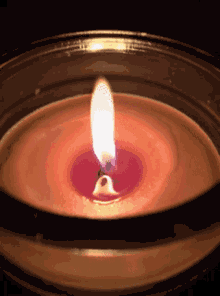Dress Code
Entry Restrictions
Parking Facilities
Security and Surveillance
Introduction and History in Brief
The temple is dedicated to Bhagwan Shiva.The Shivala Mandir Mithi is a Hindu temple in Sindh Pakistan. It was built in the 1850s to an unusual design.
Shiva has pre-Vedic tribal roots,and the figure of Shiva as we know him today is an amalgamation of various older non-Vedic and Vedic deities, including the Rigvedic storm god Rudra who may also have non-Vedic origins,into a single major deity.
At present, it is the residence of a family belonging to Chandio clan. The present area of the temple is very limited. Two rooms are constructed on the right, while a small washroom is built on the left. There is an open space in front of the temple and four shops located behind it. The house of the Hindu priest, close to the Mandir on the south, has now collapsed and shops have been constructed at that place. Near the house and the temple, a well and a sun-shed were built for caravans to provide shade and water to the travelers and their animals. Later, the sun-shed was demolished and now a shopping centre is being constructed at the site.
Some people are of the opinion that this temple belongs to Jainism. But the type of construction and broken idols of the deities and painted images of cows, bulls, etc., confirm it to be Shiva Mandir. History also proves that Shiva worshipers lived in the area that is present day Dadu District, and the temple resembles the Indian and Nepali Shiva temples.
Shiva is known as “The Destroyer” within the Trimurti, the triple deity of supreme divinity that includes Brahma and Vishnu. In the Shaivite tradition, Shiva is the Supreme Lord who creates, protects and transforms the universe. In the Shakta tradition, the Goddess, or Devi, is described as one of the supreme, yet Shiva is revered along with Vishnu and Brahma. A goddess is stated to be the energy and creative power (Shakti) of each, with Parvati (Sati) the equal complementary partner of Shiva.He is one of the five equivalent deities in Panchayatana puja of the Smarta tradition of Hinduism.
Shiva is the primal Atman (Self) of the universe. There are many both benevolent and fearsome depictions of Shiva. In benevolent aspects, he is depicted as an omniscient Yogi who lives an ascetic life on Mount Kailash as well as a householder with wife Parvati and his two children, Ganesha and Kartikeya. In his fierce aspects, he is often depicted slaying demons. Shiva is also known as Adiyogi Shiva, regarded as the patron god of yoga, meditation and arts.
Important News Related to Temple
- The temple once tried to be demolished by local Muslims goons during a Violent riot called Anti Hindus and Sikhs riots 1995.
Manyatas
The presence of ancient Shiva temple in Johi and the well-established fact that the original name of Temple is Miithi wala Shivala, it can be safely said that Hindu people of Mithi worshipped Lord Shiva as their main deity as they believe Bhagwan Shiva is protected them for their survival in Pakistan till now.
Architecture
The distinct and unusual construction of the temple makes it a unique and beautiful structure. It has two dome type structures: one is tall and erect (Qubi) and is about 70 feet high, while the other is small and round. It had four arched entrances but at present two entrances have been closed. Iron, cement and cheeroli (gypsum) have been used in the construction of the temple. Originally, idols were placed on both the domes but were removed after the Partition in 1947. The remains of the broken idols can be seen on the outer walls of the dome type structure of the mandir. Scenes of elephant and pig fights are carved on the arches of the entrances of the temple. The paintings on the outer wall have mostly vanished now.
Temple Photos
Videos from YouTube
Details awaited/solicited.
Presiding Deity
Bhagwan Shiva 🙏
Shiva with weapons
Be A True Devotee
Worship your Isht in your tradition .
But passive worship is a total waste of your time and energy .
For True Worship ,a devotee MUST master the use of weapons the Deity bears.
The weapons of Bhagwan Shiva are Trishula (Trident), Pashupatastra, Parashu-Axe, Pinaka bow.
Remember, for a Sanatani, Shastra (Weapon) and Shaastra (Holy Book) go together 🙏
A devotee must be learnt to use the respactive deity’s weapons like Sword,Gada, Trishula etc..
How to use?
Where available?
Legal Issues?
E Mail us on “Mandirdarshan.org@ gmail com”
Timing
8AM to 8PM
The winter season is perfect to visit the place as it is so hot in Summers in Telangana which can cause dificulties to visit.
No entry fee!
Aarti Timing
Basic Facilities
Activities
Festivals
Every year all major festival avam festivals are celebrated in the temple. it goes like this :-
Krishna Janmashtami, Radha Jayanti, Govardhan Puja, Holi, Ram Navami,Mahashivratri, Ganesha Chaturthi,Durga Puja, Navratris, Diwali etc..
Famous Temples Nearby
Churia, Tharparkar, Sindh, Pakistan
Krishna Temple kantio Etc..
Near by Shops & Markets
Nearby Dharamshalas
👉Click HERE to look upon dharamshalas nearby near Temple.
Hotels near Temple
Restaurants near Temple
Nearby Hospitals
Concerned Police Stations
Police Station
9Q44+P4Q, Nagarparkar, Tharparkar, Sindh, Pakistan
Managment Commity
Miscellaneous information
Legal information
Facilities to hold Functions
Library
Akharas
Mehants, Pujaris, Archakas and Sewayats
Gau Sewa, Birds and otheranimals Sewa
Langar Sewa
Gurukul/Vedic Pathshalas
Mitra Mandal Link for Advice/Guidance*
Modes of Travel
Transport between India and Pakistan has been developed for tourism and commercial purposes and bears much historical and political significance for both countries, which have possessed few transport links since the partition of India in 1947. In 2019, all public transport links between the two countries were severed because of Pakistani fury at India’s revocation of special status for Kashmir. The only way for travelers to make this journey is to cross on foot at Wagah.
- As per the Shimla Agreement of 1972 and in a bid to restore peaceful ties after the Indo-Pakistani War of 1971, both nations launched the Samjhauta Express (Samjhauta means “accord” or “compromise” in Hindi and Urdu), connecting the Pakistani city of Lahore with the Indian town of Attari, which is close proximity to the city of Amritsar.[11] The Thar Express was launched to connect the Pakistani city of Karachi through the Khokhrapar station and the Indian city of Jodhpur through the Munabao station.[2] Plans and negotiations are underway to launch a train service connecting the Pakistani city of Sialkot with the Indian city of Jammu.
- On 18 February 2007, 2 carriages of the train experienced alleged terrorist bombings near Panipat, Haryana in India. The 2007 Samjhauta Express bombings claimed lives of 68 people.[12] Both the Indian and Pakistani governments condemned the attack, and officials on both sides speculated that the perpetrators intended to disrupt improving relations between the two nations, There have been a number of breaks in the investigation of the bombings. As of 2011, nobody has been charged for the crime yet. It has been allegedly linked to Abhinav Bharat, a Hindu fundamentalist group in India. Other allegations also concurred on Lashkar-e-Taiba (a Pakistani-based terrorist organization).[13] A United States report declared Arif Qasmani to be involved in the attack.[14] The Thar Express is the other passenger railway link between the two countries, running from Karachi, Pakistan to Jodhpur, Rajasthan, India. It was not discontinued after Partition but was after the Indo-Pakistani War of 1965. On 18 February 2006, it was revived after a period of 41 years.
In 2019, as a result of the revocation of special status for Kashmir, Pakistan’s railway minister Sheikh Rasheed decreed that there would be no more rail transport links between India and Pakistan.
- A bus service connecting Poonch (India) with Rawalkote (Pakistan) over 55 km was also launched on 20 June 2006. On 5 June 2008 the passenger quota on the Poonch-Rawalkote Bus was doubled. Bus services connecting Kargil (India) with Skardu (Pakistan), Jammu (India) with Sialkot (Pakistan) and Mirpur (Pakistan) are also being planned.
- The Delhi-Lahore Bus is a passenger bus service connecting the Indian capital of Delhi with the city of Lahore, Pakistan via the border transit post at Wagah, which is the only border crossing point between India and Pakistan opened for international travelers. The bus was of symbolic importance to the efforts of the governments of both nations to foster peaceful and friendly relations.[6] In its inaugural run on 19 February 1999, the bus carried the then-Indian Prime Minister Atal Bihari Vajpayee, who was to attend a summit in Lahore and was received by his Pakistani counterpart, Nawaz Sharif at Wagah.[6][7] Its official name is the Sada-e-Sarhad (Urdu for Call of the Frontier).[7] The duration of the entire journey is eight hours, covering a distance of 530 km (329 mi).[8] While the bus service had continued to run during the Kargil War of 1999, it was suspended in the aftermath of the 2001 Indian Parliament attack on 13 December 2001, which the Indian government accused Pakistan of instigating.[9] The bus service was resumed on 16 July 2003 when bilateral relations had improved.[7] This service was suspended in 2019, as a result of Pakistani fury at the revocation of Kashmir’s special status.
Visitors’ views about the Temple
Address for Visiting and Donation Purpose
Shivala Mandir
PQQX+CPW, Mithi, Tharparkar, Sindh, Pakistan
+92 333 2512667



